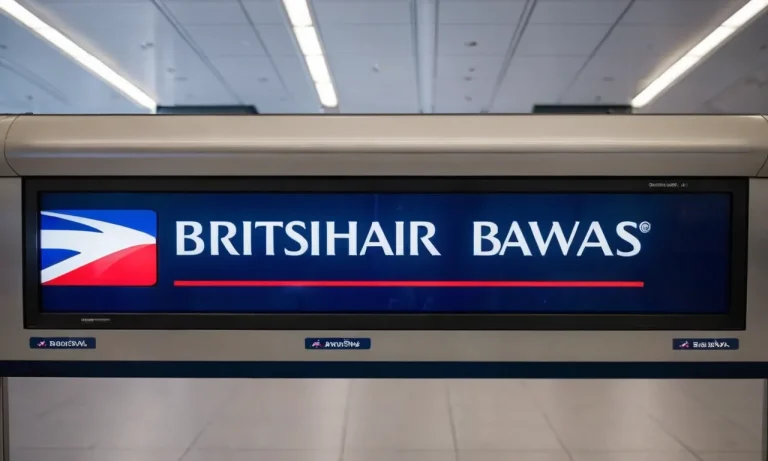Is Brooklyn A Suburb? An In-Depth Analysis
With over 2.7 million residents, Brooklyn is the most populous borough in New York City and one of the most densely populated places in the United States. But is this urban borough actually a suburb? At first glance, Brooklyn seems far too built up and urban to be considered suburban.
However, the question is more complex than it appears.
If you’re short on time, here’s a quick answer: While Brooklyn has some stereotypically suburban characteristics like detached single-family homes and backyard space, its population density, transportation infrastructure, economic integration with NYC, and history of urban development mean it does not accurately fit the definition of a suburb.
In this approximately 3,000 word article, we will analyze Brooklyn’s history, demographics, economy, culture, transportation links with NYC, and residential architecture to show that while Brooklyn has some surface similarities with stereotypical post-WWII suburbs, it does not accurately fit the definition of a true suburb.
Defining What Makes a Suburb
When it comes to defining what makes an area a suburb, there are several factors to consider. These include population density, economic ties, transportation infrastructure, and residential architecture. By examining these aspects, we can determine whether Brooklyn can be classified as a suburb.
Population Density
One of the key characteristics of a suburb is its lower population density compared to urban areas. Suburbs are typically known for their spacious neighborhoods and larger lots. However, Brooklyn, with its population of over 2.5 million people, is one of the most populous boroughs in New York City.
Its vibrant streets and bustling neighborhoods indicate a more urban environment rather than a traditional suburb.
Economic Ties
Economic ties also play a role in defining a suburb. Suburbs are often characterized by their dependence on nearby urban centers for employment opportunities. While Brooklyn does have its own thriving economy, with a diverse range of industries, it is also a major economic hub in its own right.
The borough is home to numerous businesses, startups, and creative industries, making it more akin to an urban center rather than a traditional suburb.
Transportation Infrastructure
Transportation infrastructure is another factor to consider when determining if an area is a suburb. Suburbs are usually characterized by their reliance on cars and the presence of highways. In contrast, Brooklyn has an extensive public transportation network, including subways and buses, which are commonly associated with urban areas.
Additionally, the borough’s proximity to Manhattan and its accessibility to other parts of New York City further align it with an urban environment.
Residential Architecture
Lastly, residential architecture can provide insights into whether an area is a suburb. Suburbs are often characterized by single-family homes, spacious yards, and a more spread-out layout. While Brooklyn does have neighborhoods with these features, such as Dyker Heights and Marine Park, it also has a mix of apartment buildings and brownstones that are more commonly associated with urban areas.
Based on these criteria, it is evident that Brooklyn does not fit the traditional definition of a suburb. Its high population density, diverse economy, extensive transportation infrastructure, and varied residential architecture make it more of an urban area.
However, it is important to note that the lines between suburbs and urban areas can sometimes blur, and each location may have unique characteristics that defy categorization.
Brooklyn’s History of Urbanization
Brooklyn, a borough of New York City, has a rich history of urbanization. Over the years, it has transformed from a rural area to a bustling urban center. Let’s delve into the key milestones that have shaped Brooklyn’s urban landscape.
Pre-Consolidation Development
Before Brooklyn became part of New York City in 1898, it underwent significant development as an independent city. In the 19th century, Brooklyn experienced a population boom, attracting immigrants from various parts of the world.
This influx of people led to the construction of numerous residential and commercial buildings, transforming the borough into a vibrant urban hub.
Early Transportation Links to Manhattan
One of the factors that contributed to Brooklyn’s urbanization was its early transportation links to Manhattan. The completion of the Brooklyn Bridge in 1883 provided a vital connection between the two boroughs, facilitating the movement of people and goods.
This bridge, along with other transportation infrastructure developments like ferries and streetcar lines, played a crucial role in integrating Brooklyn into the larger metropolitan area.
Post-WWII Suburban Trends
In the post-World War II era, Brooklyn, like many other urban centers, experienced a shift towards suburbanization. As people sought larger homes and quieter neighborhoods, they began moving to the suburbs.
This trend affected Brooklyn as well, with some parts of the borough experiencing a decline in population. However, it is important to note that Brooklyn also saw a wave of gentrification in recent decades, attracting young professionals and artists to its vibrant neighborhoods.
For more information on Brooklyn’s urban history, you can visit https://www.brooklyn-usa.org/about-brooklyn/. This website provides a comprehensive overview of Brooklyn’s evolution as a vibrant urban center.
Brooklyn’s Demographics and Density
When examining whether Brooklyn can be considered a suburb, it is important to understand the demographics and density of the area. Brooklyn, one of the five boroughs of New York City, is known for its diverse population and vibrant neighborhoods.
Let’s take a closer look at the population size, population density, and housing types in Brooklyn.
Population Size
Brooklyn is the most populous borough in New York City, with a population of over 2.6 million people. In fact, if Brooklyn were its own city, it would be the fourth most populous city in the United States.
The borough has seen consistent population growth over the past decade, attracting residents from different backgrounds and cultures.
Population Density
Brooklyn is also known for its high population density. With a land area of approximately 70 square miles, the borough has a population density of around 37,000 people per square mile. This makes Brooklyn one of the most densely populated areas in the country.
The bustling streets, diverse neighborhoods, and vibrant energy are a testament to the density of the borough.
Housing Types
Brooklyn offers a wide range of housing options to accommodate its diverse population. From historic brownstones in neighborhoods like Brooklyn Heights and Park Slope to modern high-rise apartments in Downtown Brooklyn, there is something for everyone.
The borough also has a mix of public housing projects, cooperative housing, and rental apartments, providing various options for residents.
It is worth noting that while there are suburban-like neighborhoods in Brooklyn, such as Marine Park and Mill Basin, the overall density and urban feel of the borough make it more closely resemble a city rather than a traditional suburb.
Brooklyn’s vibrant culture, thriving arts scene, and bustling streets contribute to its unique identity as a dynamic urban center.
For more information on Brooklyn’s demographics and housing, you can visit the official website of the New York City Department of City Planning.
Brooklyn’s Economic Integration With NYC
Brooklyn, often considered one of the five boroughs of New York City, has seen significant economic integration with the rest of the city over the past few decades. The borough’s close proximity to Manhattan, combined with its own unique characteristics, has made it an attractive destination for businesses and residents alike.
Job Centers
Brooklyn has emerged as a major job center within New York City. With a diverse range of industries, including finance, technology, healthcare, and creative arts, the borough has become a hub for employment opportunities.
Companies such as Etsy, Kickstarter, and Vice Media have chosen Brooklyn as their headquarters, contributing to the borough’s economic growth.
According to the New York State Department of Labor, Brooklyn’s job market has experienced steady growth, with an increase in employment opportunities across various sectors. The borough’s job growth has outpaced the national average, making it an attractive location for job seekers.
Commuting Patterns
Commuting patterns in Brooklyn are closely tied to its economic integration with New York City. Many Brooklyn residents commute to Manhattan for work, taking advantage of the convenient transportation options available.
The subway system and bridge connections make it relatively easy for residents to travel between the two boroughs.
According to data from the U.S. Census Bureau, a significant number of Brooklyn residents work outside of the borough, with Manhattan being the primary destination. This highlights the strong connection between Brooklyn and the rest of the city in terms of employment opportunities.
Commercial Districts
Brooklyn is home to several vibrant commercial districts, which further contribute to its economic integration with New York City. Areas such as Downtown Brooklyn, Williamsburg, and DUMBO (Down Under the Manhattan Bridge Overpass) have experienced significant growth in recent years, attracting businesses and tourists alike.
According to a report by the Brooklyn Chamber of Commerce, these commercial districts have seen a surge in new businesses, creating jobs and contributing to the local economy. The presence of major retailers, independent boutiques, and trendy restaurants has transformed these areas into thriving economic hubs.
Cultural Identity as a Borough Within NYC
Brooklyn, often referred to as the “hipster capital” of New York City, has a unique cultural identity that sets it apart from other boroughs. While it is technically a part of NYC, many argue that Brooklyn has a distinct suburban feel.
This is due to its tree-lined streets, spacious parks, and close-knit neighborhoods, which create a sense of community not typically associated with a bustling metropolis.
Historical Significance
Brooklyn has a rich history that has shaped its cultural identity. From its early days as a Dutch settlement to its rapid growth during the Industrial Revolution, Brooklyn has always been a place of innovation and diversity.
This history is still evident today in the architecture, museums, and landmarks that dot the borough’s landscape.
One of the most iconic symbols of Brooklyn’s cultural identity is the Brooklyn Bridge. Completed in 1883, this engineering marvel not only connected Brooklyn to Manhattan but also represented the borough’s growth and progress.
Today, it stands as a testament to the resilience and determination of the people of Brooklyn.
Artistic and Creative Hub
Brooklyn has long been known as a haven for artists, musicians, and writers. The borough’s vibrant art scene is fueled by its many galleries, theaters, and music venues. From the eclectic street art in Bushwick to the world-renowned Brooklyn Academy of Music, there is no shortage of artistic inspiration in this borough.
Brooklyn’s creative community has also helped shape its cultural identity. The rise of artisanal food markets, craft breweries, and independent boutiques has made Brooklyn a destination for those seeking unique and authentic experiences.
The borough’s commitment to supporting local businesses and artisans has fostered a sense of pride and community among its residents.
Family-Friendly Neighborhoods
While Brooklyn may be known for its trendy neighborhoods like Williamsburg and DUMBO, it is also home to many family-friendly communities. Park Slope, for example, boasts tree-lined streets, top-rated schools, and spacious parks, making it an ideal place for families to settle down.
Brooklyn’s numerous parks and green spaces provide a welcome respite from the fast-paced city life. Prospect Park, designed by Frederick Law Olmsted and Calvert Vaux, offers a peaceful oasis where residents can escape the hustle and bustle of the city and connect with nature.
Transportation Infrastructure and Commuting
When discussing whether Brooklyn can be considered a suburb, one important factor to consider is its transportation infrastructure and commuting options. Brooklyn is known for its extensive transportation network, which makes it easy for residents to travel within the borough and to neighboring areas.
Subway System
The subway system in Brooklyn is one of the most efficient and convenient modes of transportation. The borough is served by several subway lines, including the A, C, F, G, and R lines, among others. These lines connect Brooklyn to Manhattan and other parts of New York City, providing residents with a quick and reliable way to commute to work or explore the city.
The subway system in Brooklyn is well-maintained and operates 24 hours a day, making it accessible to commuters at all times.
Commuter Rail
In addition to the subway system, Brooklyn also has access to commuter rail services. The Long Island Rail Road (LIRR) operates multiple lines that serve Brooklyn, providing a direct connection to Long Island and other parts of New York State.
Commuter rail services are particularly beneficial for residents who work outside of Brooklyn, as they offer a comfortable and efficient way to commute to their workplaces.
Road Infrastructure
Brooklyn’s road infrastructure is well-developed, with a network of highways, bridges, and tunnels connecting the borough to other parts of New York City and beyond. Major highways such as the Brooklyn-Queens Expressway (BQE) and the Belt Parkway provide easy access to Manhattan, Queens, Staten Island, and other surrounding areas.
The road infrastructure in Brooklyn is constantly being improved and expanded to accommodate the growing population and ensure smooth commuting for residents.
Conclusion
In conclusion, while Brooklyn shares some surface similarities with stereotypical post-WWII automobile-centric suburbs, its history of urbanization, high population density, economic integration with NYC, transportation infrastructure, and cultural identity as an urban borough within New York City mean that it does not accurately fit the definition of a true suburb.
Brooklyn is highly urbanized with strong infrastructure ties to the economic center of NYC. It functions as one interconnected borough within the larger NYC metropolitan region rather than a separate suburban municipality.
So while some Brooklyn neighborhoods have suburban-like features, Brooklyn as a whole is unambiguously urban and a fundamentally integral part of New York City.








